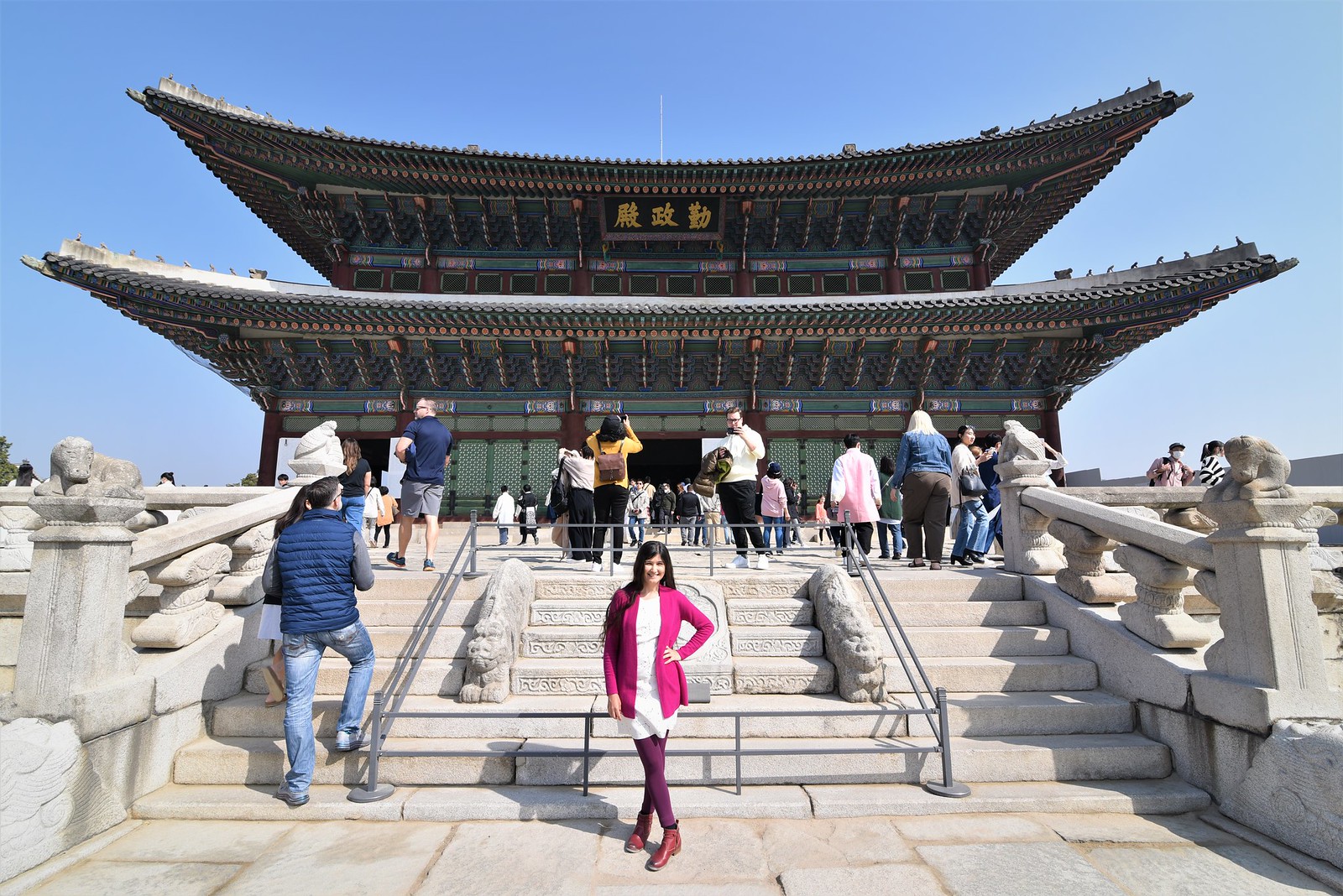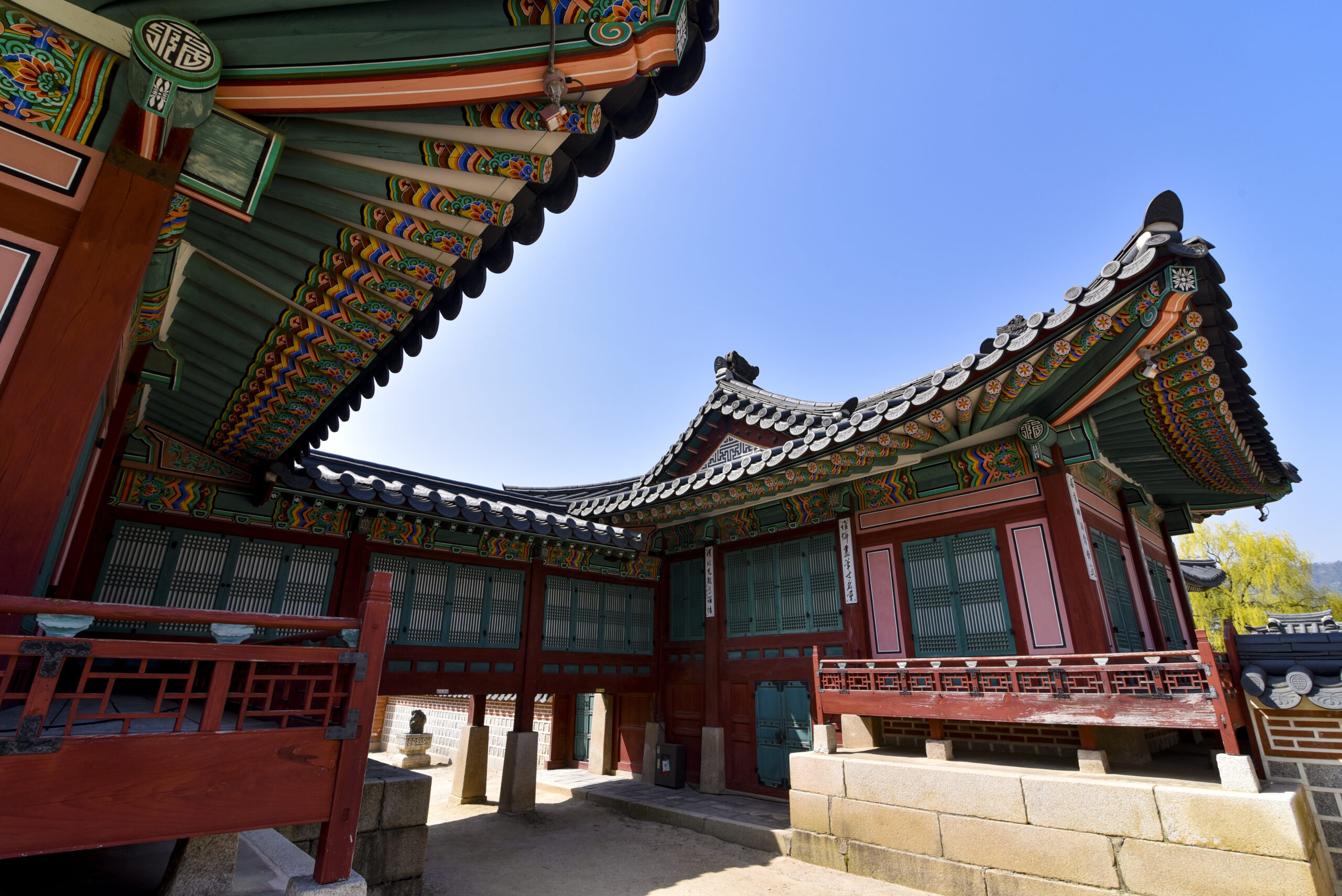Quick heads‑up, fellow travelers: Hit the Road Ket contains some affiliate links. Book through them and I earn a small commission at no extra cost to you – fueling my caffeine fix and future travels! For more details, see my Disclosures.
Gyeongbokgung – the name means palace blessed by heaven. This palace is on almost every itinerary of tourists visiting South Korea and for a reason. First of all, it’s the oldest and grandest of Seoul Palaces. Plus, you can catch Changing of the guards ceremony here.
Price: 3000 won, free over 65 and a discount for juniors
Admission times: every day, except Tuesdays 9am-6pm
Map: This map may help you see the locations of each building you would want to see.
Depending on how much time you have in Seoul, here are best suggested itineraries:
See the detailed tips and itineraries for visiting Seoul.
See the best suggested 1-day itinerary for visiting Seoul.
See the best suggested 2-day itinerary for visiting Seoul.
See the best suggested 3-day itinerary for visiting Seoul.
Tickets
Once you enter the Gwanghamun gate, you can buy the tickets on the right hand side. If you are visiting other palaces as well, you may consider buying the Royal Palace pass, which includes admission to 4 palaces and Jongmyo shrine. The pass costs 10000 won, so it’s definitely worth it even if you are only visiting Gyeongbokgung (3k won), Changdeokgung (3k won) and its Secret garden (5k won). The pass lasts for 3 months, so it’s definitely worth it.
Keep in mind that as with other palaces, admission here is free if you wear a hanbok.
If you like tours, you have an option to join free guided tours of the palace at 11:00, 13:30 or 15:30. You just have to show up and join the tour. However, it’s first-come first-served, so be there somewhat earlier to make sure you can join.
Changing of the Guards Ceremony
Do come to buy your tickets before 10am to catch the Changing of the Guards ceremony (the reenactment happens every day, except Tuesdays, twice a day at 10am and 2pm). It is happening at the courtyard, where the ticket booth is, before you show your ticket to enter the palace, however tons of people come for this ceremony, so to avoid queues and find your spot, be a little earlier. Keep in mind that you can watch the ceremony without buying the palace ticket. So you can come here another day as well.
For changing of the guards best would be to find your spot in the middle of the courtyard, as the area you can stand at will be wired relevantly. The guards will enter the courtyard from next to the ticket booth and move through to the Gwanghamun gate.

After the ceremony you have two options, either visit the National Palace Museum or directly enter the palace. The museum is not really crowded. It’s also free of charge, as all national museums. That’s a great thing, like in the UK honestly.
If you are going to skip the museum and enter the palace, you can leave the ceremony slightly earlier before its end, you could enter the palace slightly before the rest of the people standing there, which won’t help much with the crowds, but still.
Exploring the Palace
This palace is actually the most famous and biggest among the 5 grand palaces in Seoul. It also served, as a filming location for various K dramas, including Goblin, The Last Empress and The Moon Embracing the Sun.
The history of the palace dates back to 1395, when it was established by the new Joseon dynasty. The palace grounds were destroyed and restored several times. Most of the current buildings were rebuilt during the major restoration project in 1990, while some building were restored as late as 2000s.
To enter the palace, you present your ticket at the Heungnyemun Gate. If you are visiting during spring time, you will find some cherry blossoms inside with cute views.
While walking towards the palace, take note of the raised pavement in the middle – that’s where the king and queen walked. No one else was allowed to walk there, they followed on the sides. If you have seen the historical K-dramas, this is depicted in all of them.
Next, past the Geunjeongmun gate, you will end up at the heart of the palace, the Geunjeongjeon Hall, which was used for royal and state ceremonies, including coronation of the Joseon kings. Peak inside to see the throne.

Behind this main hall is Sajeongjeon, which was used for everyday business, including meetings with councilors. This hall is said to be the only one that survived the
These two halls are followed by the living quarters of the king and then of the queen consort. If you want to see what were inside these halls, you will be disappointed, as most items are moved to the museums, while these halls are mainly empty.
Next, head to the Gyeonghoeru pavilion surrounded by the pond. This building was used for state events, including banquets. If you want to view the pavilion itself, you have to join a tour. We didn’t do this, as this is available from April through October and it wasn’t open when we visited. If you are interested, inquire at the ticket office. It’s unnecessary though, unless you are absolutely set on viewing it better.

After this, if you want to more thoroughly explore the palace, head to Donggung – East palace, which was the princes’ residence, followed by the kitchens and living quarters of queen mothers.
Jagyeongjeon – served as the queen mother’s quarters. It was built in 1800s and is said to be the only building that survived the Japanese demolition project in the 20th century.
Hyangwonjeong Pavilion to the north is lovely and provides gorgeous background for photos.

Behind it stands the Geoncheonggung palace used by Kings and Queens during the later years of the Joseon rule. This was the place, where queen Myeongseong was assassinated in 1895 – this event is recalled often due to the fact that it was soon followed by the Japanese occupation, which lasted many decades. This event is actually either depicted or referred in many historical K-dramas.
One note – in this palace, as well as the others – if you are expecting to see many items from the old times, you will not find them here. You will see the thrones, maybe a couple of fans and the folding screens/room dividers (those were special and had various uses, including protection from wind, separating space, separating the kings, when they didn’t want to be seen). The items that were used in the palaces are mostly in different museums, particularly in the National Palace Museum.

If you are a history buff and have enough time, after visiting Gyeongbokgung, you can head to the National Folk Museum of Korea. The museum is free. We skipped this, as there were too many other things we wanted to do.
Gyeongbokgung Palace at Night
If you are visiting Seoul in Spring or Autumn, you might be able to visit the palace at night as well. It’s usually during May-June and September-October dates from 7pm to 9.30 pm.
The night viewing ticket is separate and costs 3,000 won. You can reserve your tickets via the official website when they become available for the season, however, only 2500 tix are available online. You can also get them on the spot, 300 tickets are available to foreigners every day and sell on a first-come first-served basis. You have to present your passport.
With this limited number of tickets, if you really really want to visit at night, your best bet is wearing a hanbok. In that case, you get in for free, and the number is not limited to those 2500+300 a day tickets.
See also:

Hello I am Ket,
A traveler, planner, and sweet tooth behind Hit the Road Ket.
Travel isn’t just my passion – it’s a lifeline for my mental health. Having lived in three cities and explored 60 countries (and counting!), I created this blog to share my experiences, smart tips, and itinerary advice with fellow travel lovers. I’m all about making the most of limited time, finding scenic routes, and turning every trip into something memorable – coffee in hand, of course.



